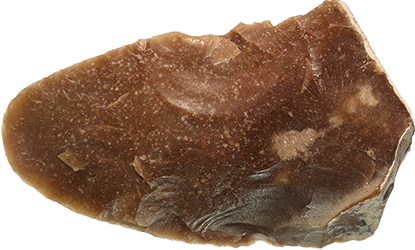
Object: Butted Knife
Date: ca. 2955-2781 cal BP (between about 1000-830 BC), Late Archaic period
Context: Lower Pecos Canyonlands, Sayles Adobe, Unit F, Occupation 2
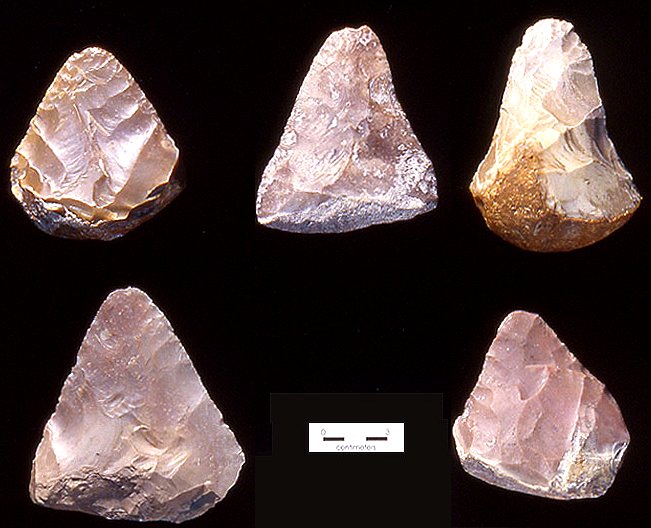
"Hand-axes," "fist-axes," "butted-knives," "butted-bifaces," "Kerrville bifaces/knives," "Castroville butted knives," and "agave knives." Many names, one tool type. One function, or many functions? The butted knife, as it will be called here, is a distinct formal tool found in Central Texas and the Lower Pecos Canyonlands of southwest Texas. Some archeologists have asserted that it was used primarily for cutting and processing plants, others have suggested such artifacts were butchering tools. Like an archeologist’s favorite trowel, some of these knives were likely carried by ancient people from place to place, season to season, getting resharpened and reduced as the blade edge was renewed by their maker.
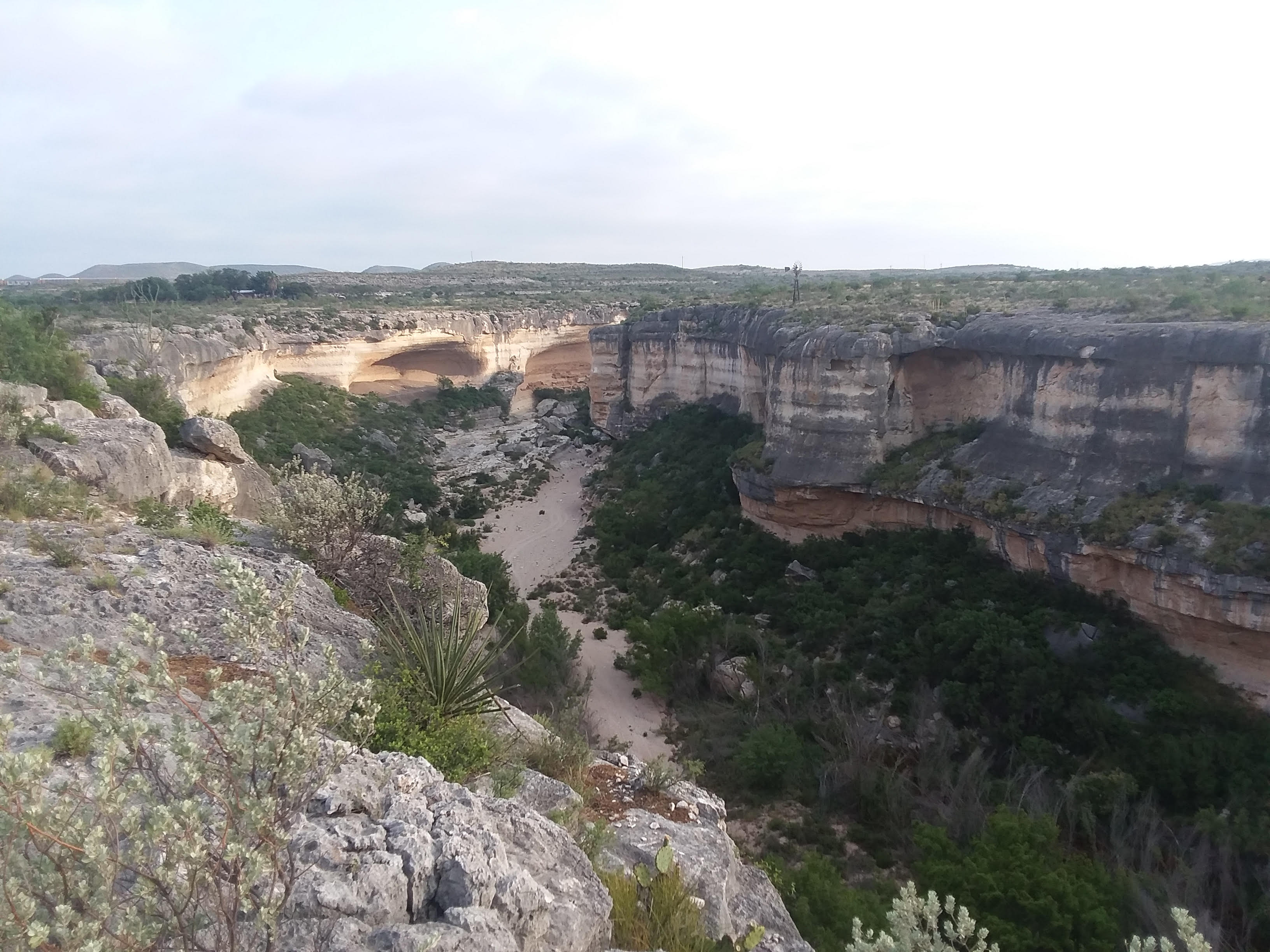
The question remains—were butted knives strictly for plants, or were they used for other activities as well? Here we take a (microscopically) close look at a butted knife. Archeologists found this specimen in 2016 during excavations at the Rio Grande River terrace site Sayles Adobe. Sayles Adobe is a deep and stratified terrace near the banks of the Rio Grande and the mouth of Eagle Nest Canyon in the Lower Pecos Canyonlands, an area occupied by indigenous Americans for more than 12,000 years. Microanalyses of the Sayles Adobe butted knife yielded strong evidence for the use of these knives in processing plants. Given its context, it was likely used to process plants baked in earth ovens, such as agave, sotol, and yucca.
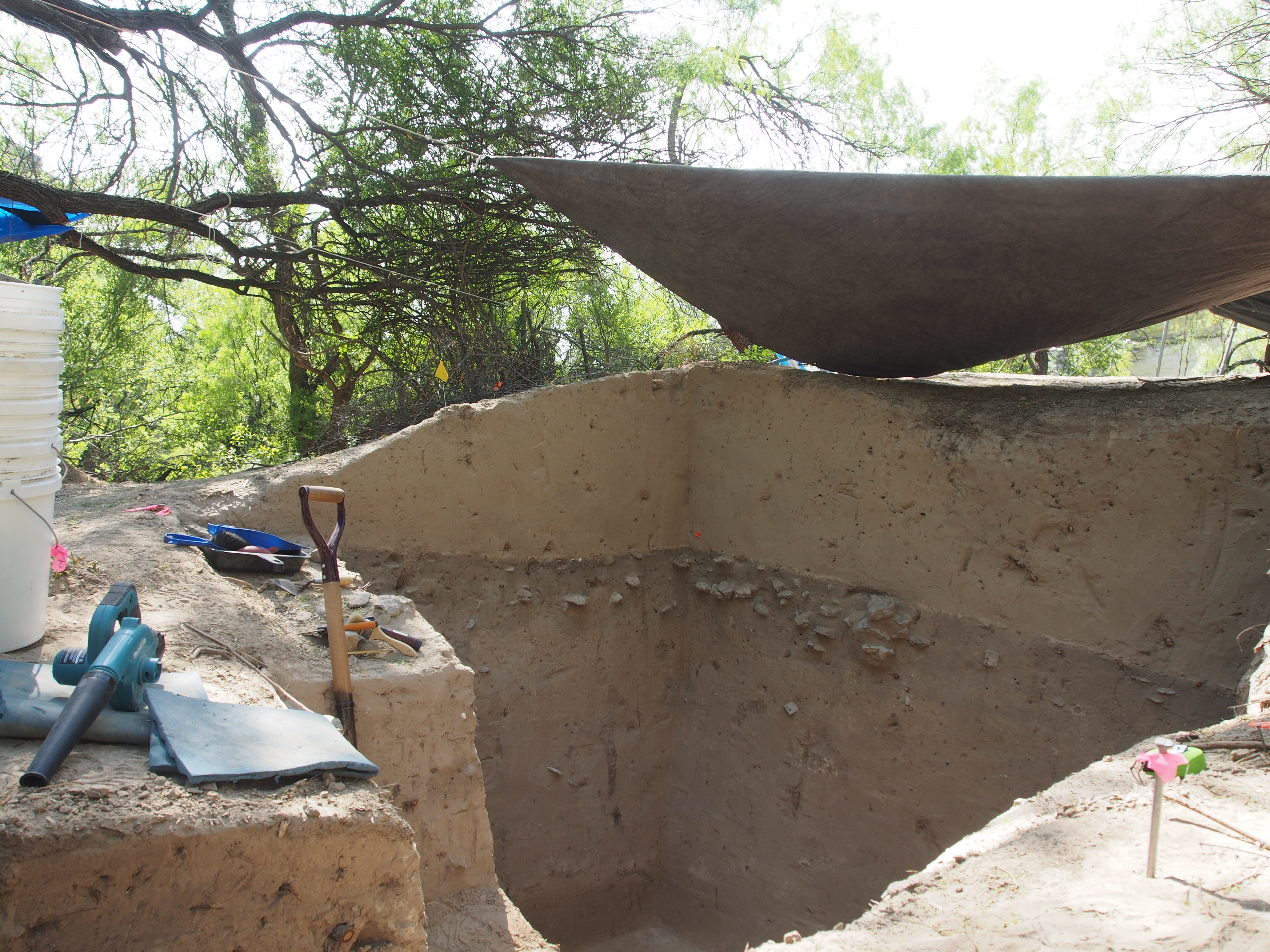
The Sayles Adobe butted knife is the only example known from Eagle Nest Canyon, a canyon containing impressive rockshelter sites which were subject to multiple waves of research and excavation over the last century. Sayles Adobe is not one of these famed rockshelters. It is a terrace site, formed by water-born sediments deposited during slow-moving flood events, such as when the nearby Rio Grande floods and backs up into Eagle Nest Canyon. It is stratified (layered) and multicomponent, with 17 distinct cultural layers between the ground surface and 3.5 meters below surface. Archeologist Tori Pagano found evidence of food processing, cooking, and stone tool making during the excavations she led at the site as part of Texas State University's Ancient Southwest Texas Project (ASWT). Radiocarbon dates from the site range from as recently as 676 calibrated years before present (cal BP = AD 1950) to as early as 9204 cal BP, which spans the Late Paleoindian period through the Late Prehistoric.
Archeologists excavating the site found the butted knife directly on top of an incipient burned rock midden buried about 1.4 meters (or 4 and a half feet) below surface. Burned rock middens are deposits of discarded rock and other waste material from the baking of food below ground in earthen ovens. Wood charcoal from the cooking feature was radiocarbon dated to 2867 cal BP, the early part of the Late Archaic period. Other materials found in the related occupational zone include projectile points, knives, flaking debris from creating or resharpening stone tools, the bones of terrestrial and riverine animals, and abundant burned rock from cooking.
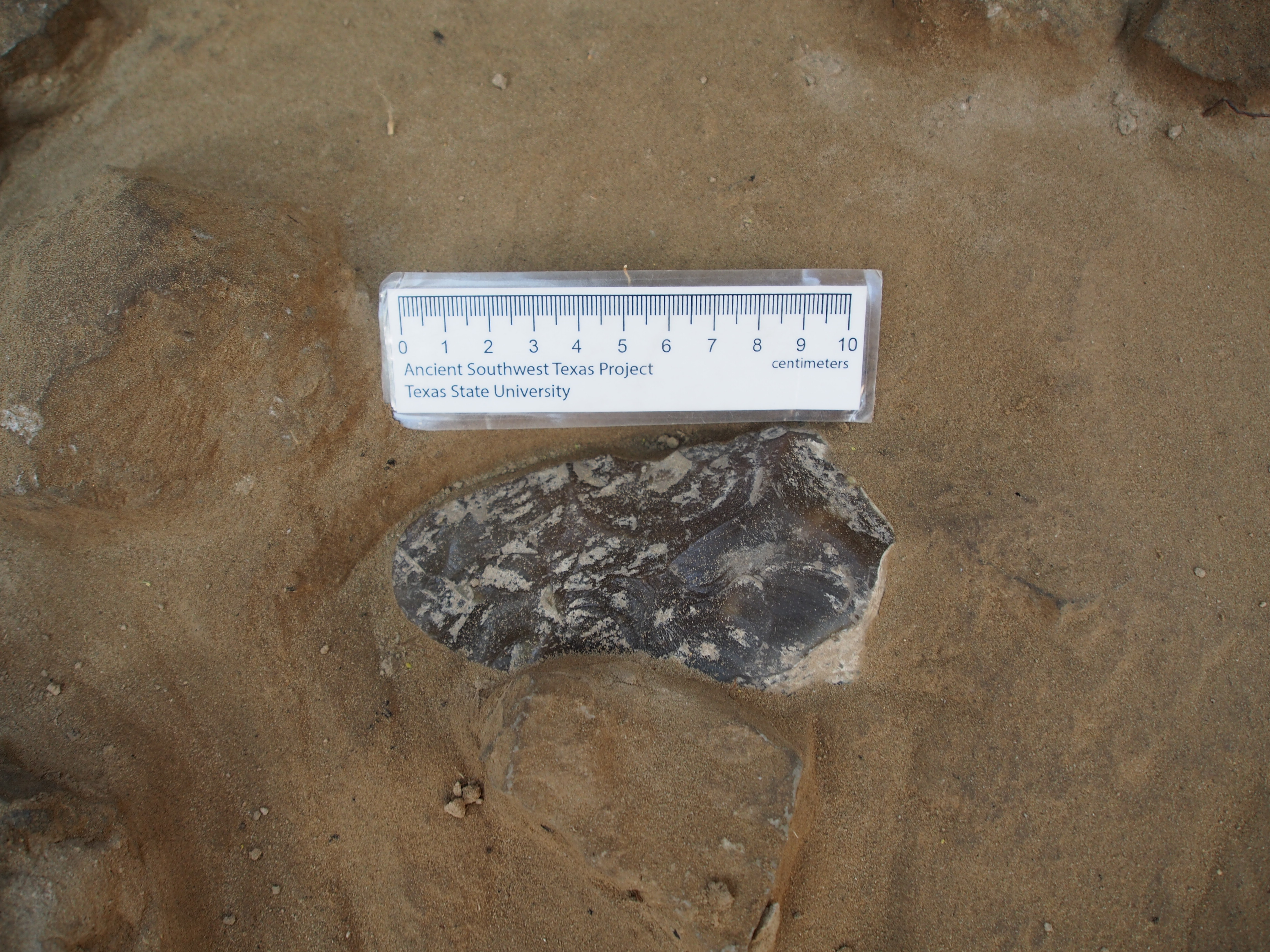
The Sayles Adobe butted knife is made from a dark brown chert. Like other butted knives, it has a thick "butted" proximal end (the part held in the hand) with cortex (the weathered outer rind of a rock or cobble). The thin cortex suggests this butted knife was made from high quality ledge chert, which is uncommon in the Lower Pecos, but occurs in greater abundance in the Kerrville area. The distal (pointed) end is thin and carefully made for cutting or slicing, rather than chopping like Old-World fist- or hand-axes. The entirety of this tool’s cutting surface is polished to a high gloss from use. "What a great candidate for use-wear analysis," the archeologists thought!
What is use-wear? It is the study of how a stone tool or other object was used by studying wear patterns. The direction of striations (tiny grooves from abrasion) tells a use-wear analyst how a stone tool was used (for example, slicing, cutting, or chopping). Subtle patterning of the gloss on the surface of the tool suggests to the analyst what type of material the tool was used on. Thousands of years after organic materials—wood, bone, or plant material—have decayed we can understand how an individual tool was used. Much can be discovered by looking at tools under the microscope!
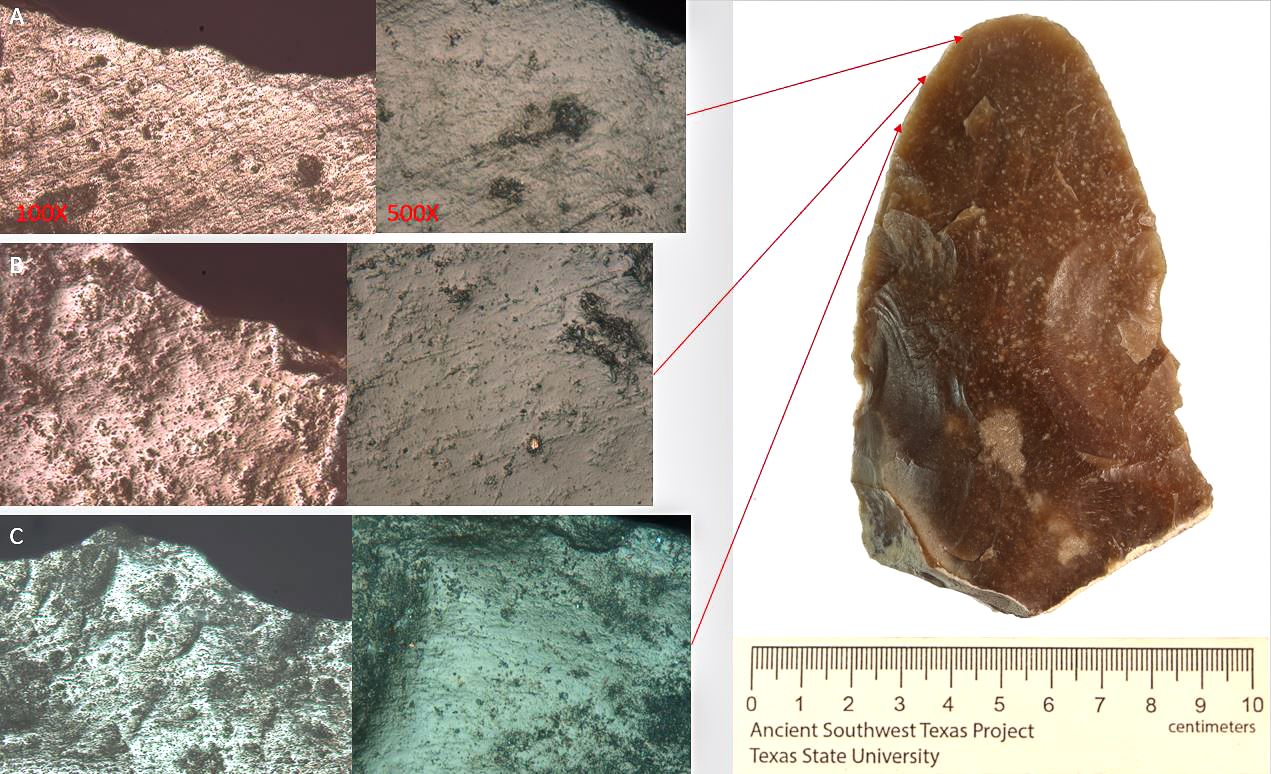
Given the obvious heavy wear, ASWT archeologist Joy Tatem selected the Sayles Adobe butted knife for use-wear analysis, using low- and high-power magnification (100x and 500x). She found the densest and most continuous microscopic polish on the left lateral edge (see images above and below). Even under low-power magnification, striations are visible. In the micrographs pictured above, the top left image (A) shows consistent polish with micropitting and striations at an oblique angle to the edge. The middle and lower images (B and C) show overlapping oblique and parallel striations cutting into well-developed, continuous polish. Striations found at differing angles on top of the developed polish suggest that the tool was used multiple times.
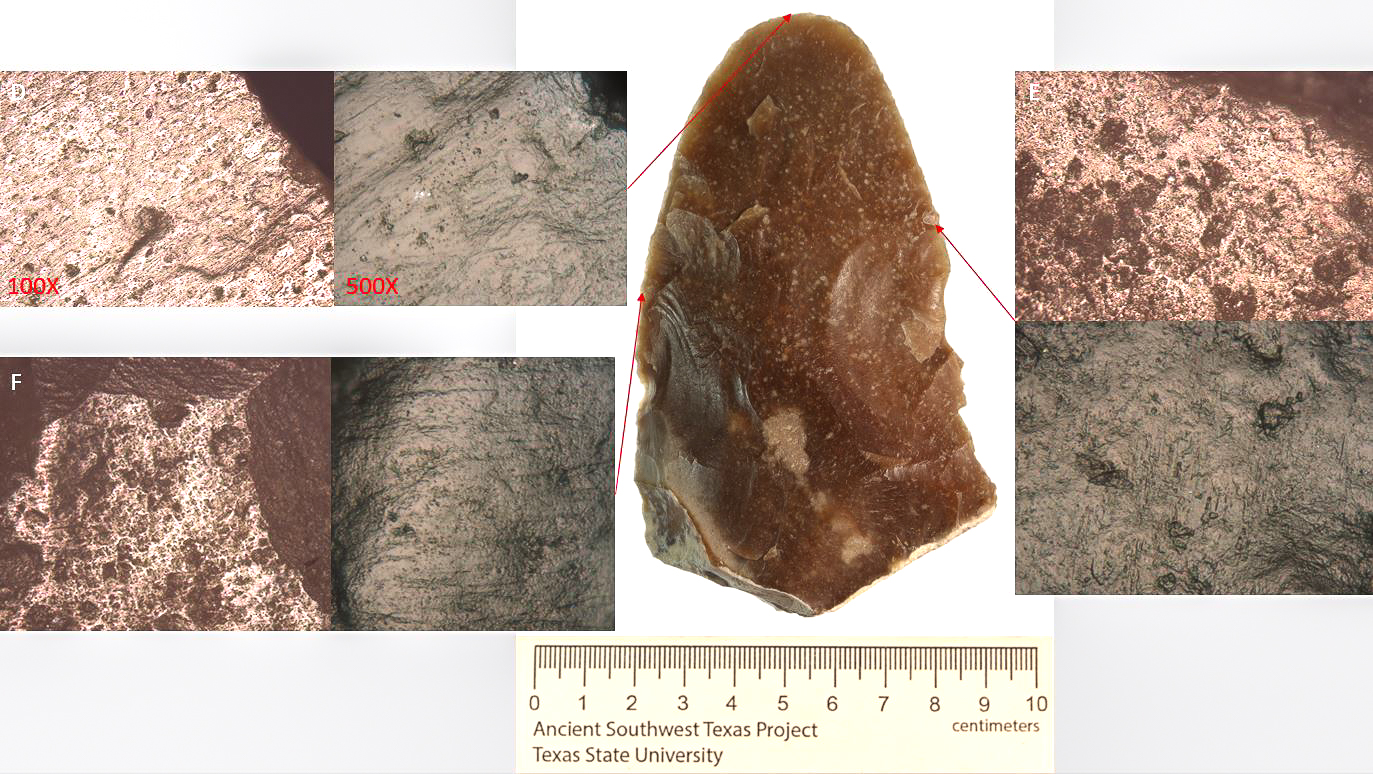
In the above image, the micrograph on the top left (D) shows bright polish and striations perpendicular to the edge. The top right micrograph (E) shows discontinuous polish, which indicates that this location was not as heavily used as other areas of the tool’s surface. Bottom left (F) shows a high spot with well-developed polish and surrounding flake scars without polish, which suggests that this tool was re-sharpened and therefore used during multiple processing events.
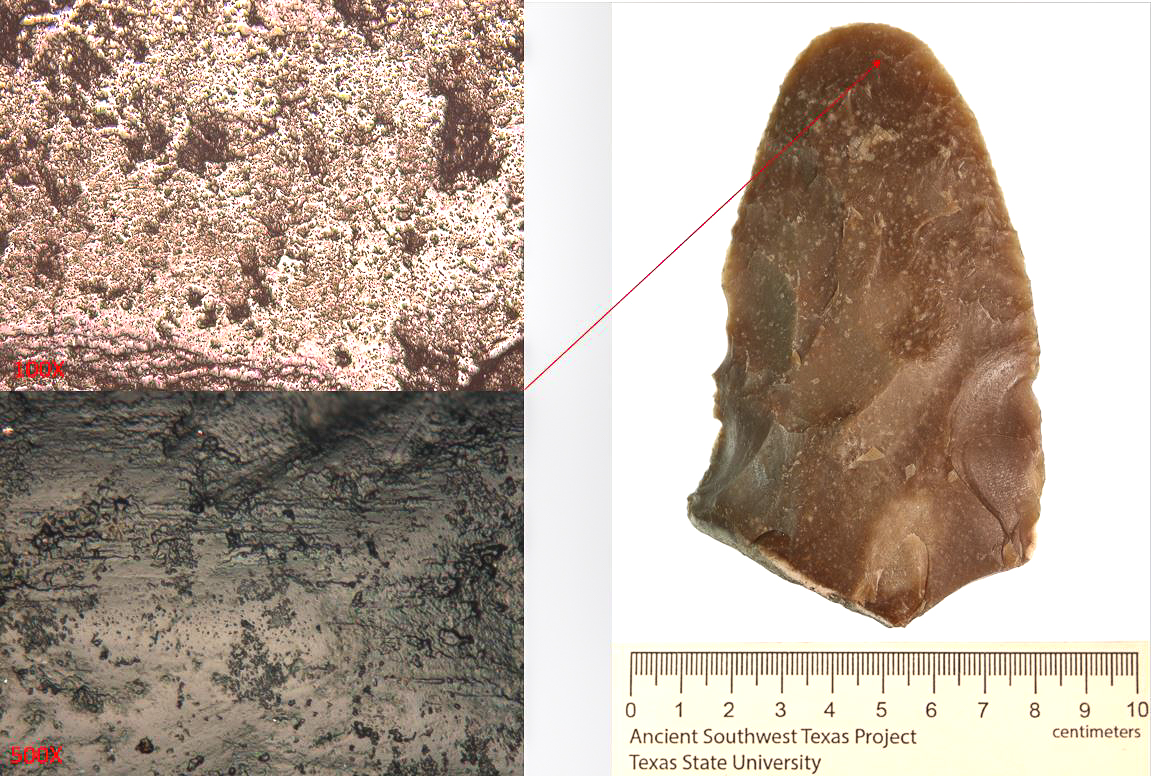
The above images show well-developed polish and striations parallel to the distal edge. Subparallel striations overlapping at multiple angles show that this was a well-used tool. This combination of use-wear characteristics suggests the contact material was high in silica. Silica plays an essential role in plant growth and development—it helps keep plants strong and resilient to environmental stress. Evidence of silica on the surface of a tool suggests that plant was the contact material on which the tool was used! Said simply, the Sayles Adobe butted knife was used to process plants.
Tatem conducted experimental analyses to complement her use-wear analysis of the Sayles Adobe butted knife. She used two butted knife replicas, made by expert flintknappers, to process plants—one was used exclusively on Agave lechuguilla and the other on sotol (Dasylirion sp.). She then conducted use-wear analyses on the experimental specimens and compared her observations to the archeological specimens. She also examined experimental stone tools used on other materials, such as wood, animal flesh, and bone. Tatem’s experimental work provides further evidence for her finding of wear patterns consistent with slicing and cutting silica-rich plants, such as agave, with the Sayles Adobe butted knife.

Tatem is not the first Texas archeologist to study butted knives. This distinct tool type, and the noticeable polish found on so many of butted knives, has piqued the interest of archeologists for decades. Further studies are key to improving our understanding of how indigenous people used these knives and transformed desert plants into sustenance and material culture. Organic residue analysis (studying the traces of organic matter clinging to the artifacts) would complement future use-wear studies, and could provide direct evidence of contact materials, such as the specific type of plant a given tool was used to process.
To return to the butted knife from Sayles Adobe, the use-wear evidence suggests this specimen was used and reused repeatedly for trimming the leaves of Agave lechuguilla, the dominant plant identified in Eagle Nest Canyon sites. Such trimming would have been done prior to baking lechuguilla hearts for prolonged periods (several days) in an earth oven pit, ringed by fire-cracked (burned) rock. Although archeologists did not expose the central pit of the incipient burned rock midden atop which this butted knife was found, it must have been close by.
Taking all evidence from Sayles Adobe into consideration, the following sequence of events can be speculatively inferred. A plant-baking worker, possibly an experienced young woman (ethnographic accounts indicate women were commonly, though not exclusively, responsible for agave roasting), left behind a favorite tool after a hard day’s labor trimming Agave lechuguilla in anticipation of the next day’s earth oven. She forgot the butted "agave" knife on the outer edge of the oven facility, where it was sealed for the next 2,900 years beneath layers of sand and silt deposited by floods in Eagle Nest Canyon and the nearby Rio Grande.
Credits
Written by Victoria "Tori" Pagano and Joy Tatem. Tori led the Ancient Southwest Texas Project investigations at Sayles Adobe for their 2019 master’s thesis, focusing on the natural and cultural site formation processes that created the terrace site. Joy conducted use wear analysis on a range of stone tools from the Lower Pecos Canyonlands, including this butted knife, for her 2021 master’s thesis. Images were provided by the authors. Tori works for Terracon Consultants and Joy works for AR Consultants. The Sayles Adobe butted knife (specimen 50158) is curated at the Center for Archaeological Studies at Texas State University.
Print Sources
Pagano, Victoria C.
2019 Stories in the Sand: Excavation and Analysis of the Sayles Adobe Terrace (41VV2239) in Eagle Nest Canyon, Langtry, Texas.. Master’s Thesis, Department of Anthropology, Texas State University, San Marcos, Texas.
Tatem, Joy C.
2021 Use-Wear Insight into the Chipped Stone Plant-Processing Toolkit of the Lower Pecos Canyonlands. Master's thesis. Department of Anthropology, Texas State University, San Marcos.
Turner, Ellen Sue, Thomas R. Hester, and Richard L. McReynolds
2011 Stone Artifacts of Texas Indians. Taylor Trade Publications, Lanham, Maryland. Download